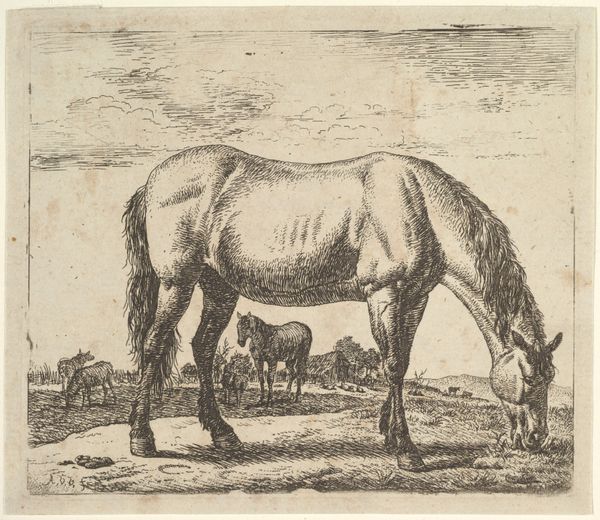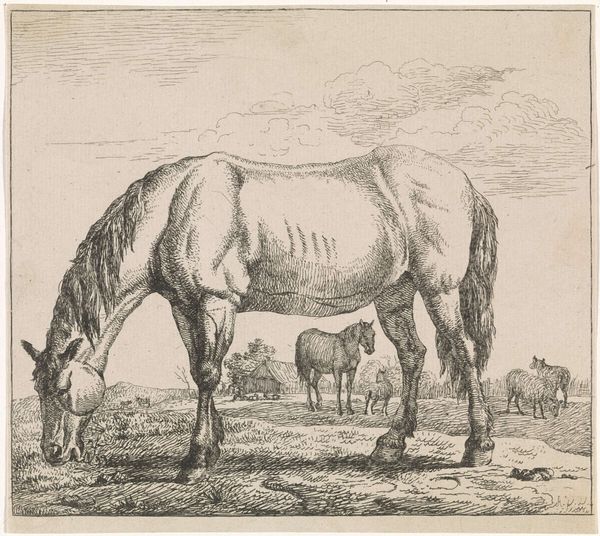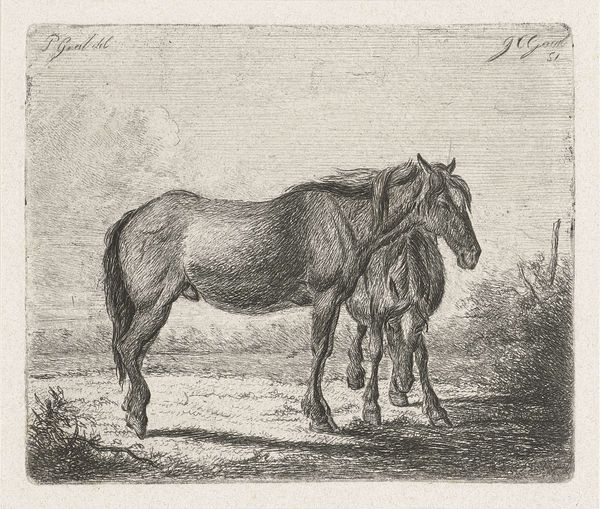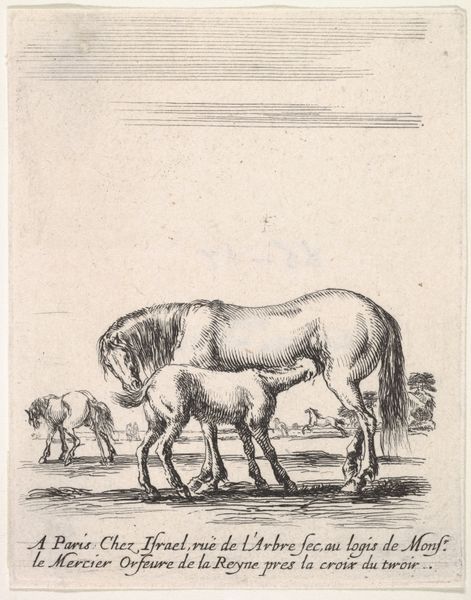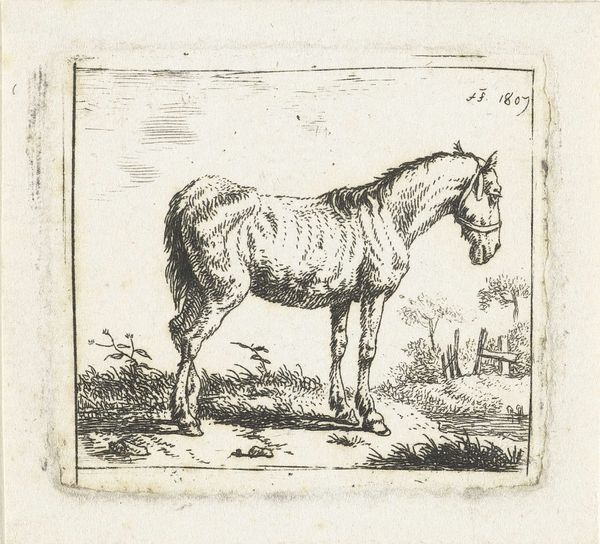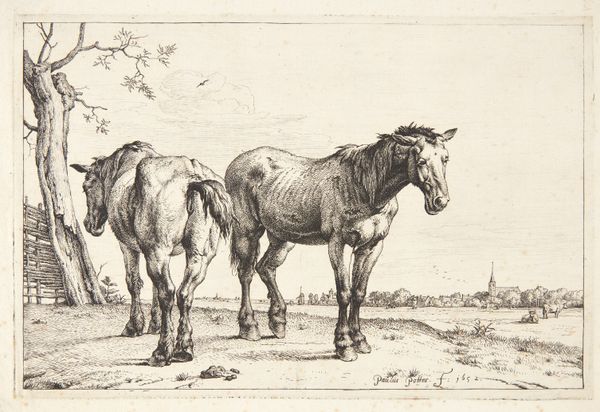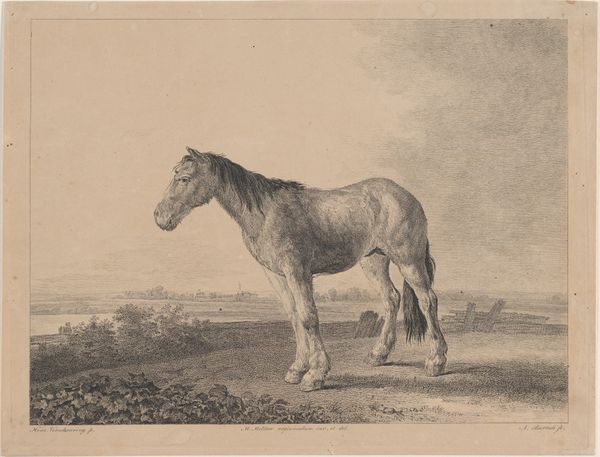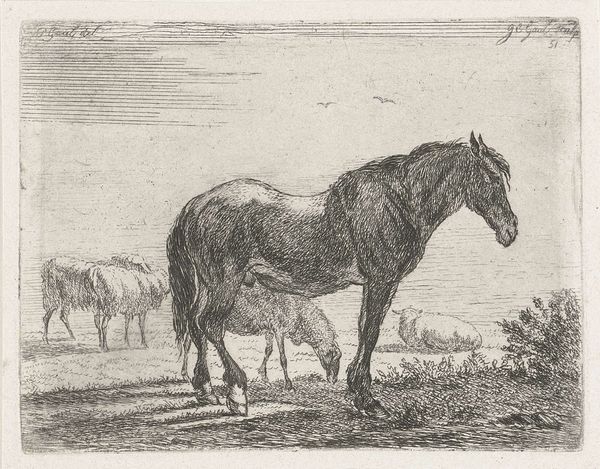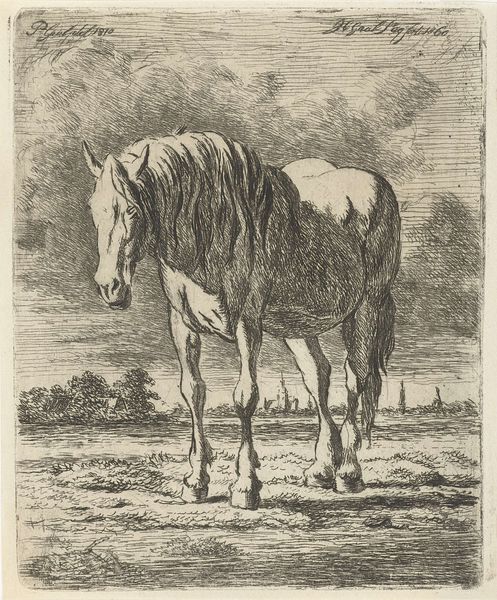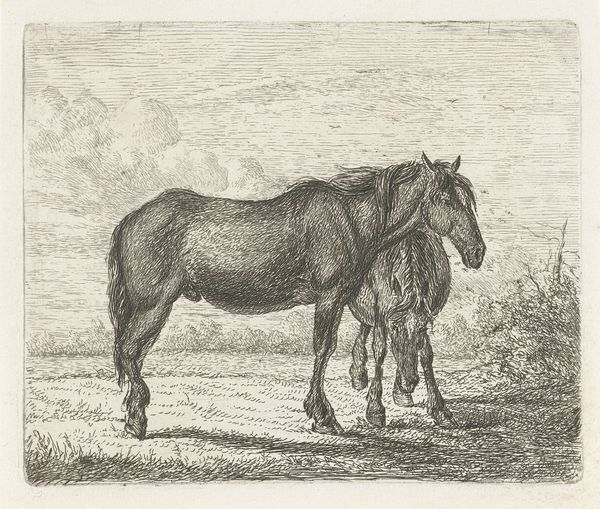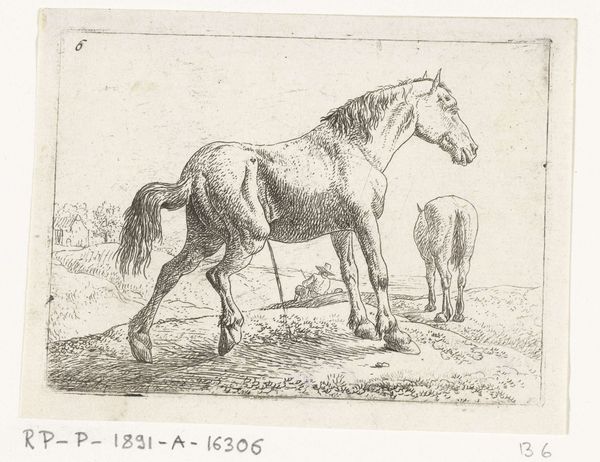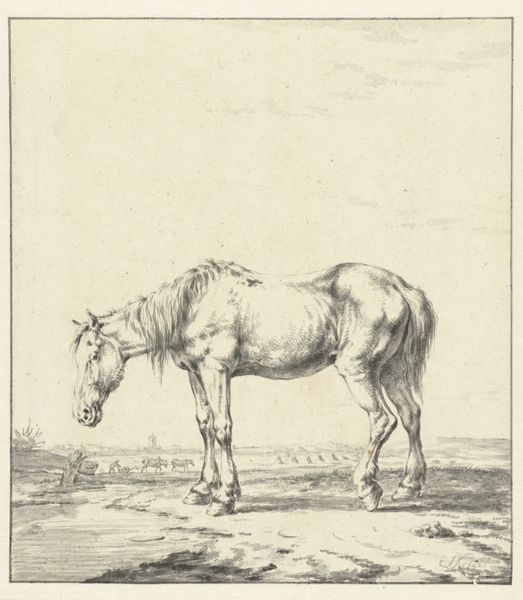
print, engraving
#
pencil drawn
#
amateur sketch
#
shape in negative space
#
light pencil work
#
negative space
# print
#
pencil sketch
#
pencil drawing
#
pen-ink sketch
#
pencil work
#
remaining negative space
#
engraving
Dimensions: 108 mm (height) x 130 mm (width) (bladmaal)
Editor: We’re looking at “Græssende hest,” or “Grazing Horse,” from 1821, by Christian Holm. It's an engraving, and it's quite simple, almost like a study. It’s a horse grazing, and there are other horses in the background and what looks like a simple cottage. It gives me a feeling of rural simplicity, and almost feels like a political commentary for some reason. What are your thoughts? Curator: It's fascinating how an image of a grazing horse can evoke a sense of political commentary for you. How so? Thinking about it from a historical perspective, in the early 19th century, representations of the rural were often loaded with ideological meaning. Were the idyllic rural scenes simply romantic notions, or did they reflect actual power structures? Editor: That’s a great point. The image feels unidealized—the horse is rendered with such stark realism. The artist's decision to depict the everyday working life might be commenting on larger social themes? The image also appears quite humble in comparison to other depictions of nature at the time. Curator: Precisely. Consider the context: the Danish Golden Age was budding, with its national romanticism and focus on 'Danishness'. Was Holm perhaps critiquing the era's romanticized idealizations, subtly highlighting the often-overlooked realities of rural life? The simplicity of the scene could also imply a certain modesty of Denmark during that era. Editor: I didn't consider that connection to the rising national identity, it enriches the reading. Seeing this in light of the “Danishness” movement casts the work in a different political tone entirely. Curator: And this illustrates how representations are rarely neutral, they actively shape and reflect societal values, regardless of what the artist intended. Thank you, you’ve enriched my reading of this engraving.
Comments
No comments
Be the first to comment and join the conversation on the ultimate creative platform.
